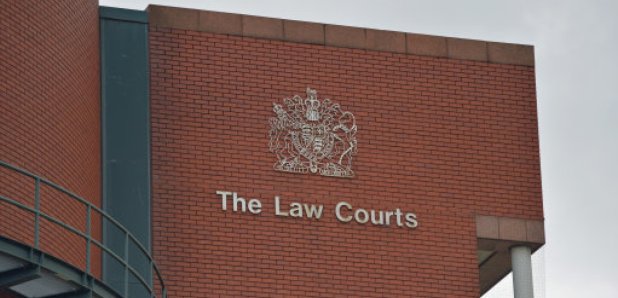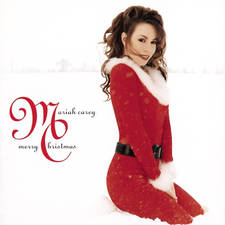BLOG: HILLSBOROUGH TRIAL
4 February 2019, 12:10 | Updated: 4 February 2019, 12:11

A WEEKLY UPDATE OF ALL THE KEY MOMENTS FROM PRESTON CROWN COURT
The trial of former Match Commander on the day of the Hillsborough disaster, David Duckenfield, and the former Club Secretary of Sheffield Wednesday Football Club, Graham Mackrell, is underway at Preston Crown Court.
74-year-old Duckenfield, a former Chief Superintendent of South Yorkshire Police, denies the gross negligence manslaughter of 95 men, women and children who died at the match on April 15 1989.
There can be no prosecution for the 96th person, Tony Bland, as he died more than a year and a day after the disaster and his death is "out of time" under the laws of the time.
Co-accused, 69-year-old Graham Mackrell, who was also the stadium safety officer at Hillsborough, denies breaching a condition of the ground's safety certificate and a health and safety offence.
Here are the details of what has been said in court this week:
MONDAY (28/01): The week began in Preston Crown Court with evidence from four witnesses.
Former South Yorkshire Police Officer, Kevin Godley, was working at both the FA Cup semi-finals in 1988 & 1989. Both matches were played at Hillsborough and were contested between Liverpool & Nottingham Forest.
Mr.Godley told the court that he was part of a serial of officers that supervised turnstiles 23-27 in the South Stand of the ground.
He said that he believed there “were less police officers in 1989 than in 1988 - because of how officers working were going to be paid.”
The court then heard evidence from David Essery, a Liverpool fan who had been at both the 1988 & 1989 FA Cup semi-finals at Hillsborough.
Mr.Essery, who was in the West Terrace (Leppings Lane End), described the approach up to the stadium as ‘chaotic’ - At 2:30pm, he said “Officers were shouting at fans to show them their tickets and climb over the tops of the turnstiles.”
Mr.Essery, who lost two of his friends in the disaster, agreed that the policing operation in 1988 was “more organised and hugely different” than in 1989.
The court then heard evidence from a former South Yorkshire Police Sergeant, William Crawford.
Mr.Crawford was in charge of a serial of officers stationed at Turnstiles A-G at the Leppings Lane End before the match and then moved to the Central Tunnel once the game was underway.
He said regular policing duties were hampered due to the sheer number of fans coming in – “Fans should have been arrested for climbing over the turnstiles – but because of the sheer volume, it didn’t happen.”
Mr.Crawford also admitted that if he knew Gate C (next to the turnstiles) had been opened, he could have stopped around 1,000 fans from entering the pens by closing a gate into the central tunnel.
The final witness for today was Alan Hampshire - A former Police Officer serving in a serial at the Leppings Lane End of the ground in 1989.
A statement was read to the court from Mr.Hampshire by Christine Agnew QC (Prosecution).
Mr. Hampshire said when he entered the track surrounding the pitch inside the stadium, he initially thought it was a major pitch invasion.
Inside one of the pens behind the goal, he describes seeing a lifeless Liverpool fan and was urged by supporters around him to climb inside to help.
He describes fans who died as ‘blue’ and how it was a volatile atmosphere on the pitch as fans were being brought on, both dead and alive.
TUESDAY (29/01): The court began by hearing from Christopher Parsonage - a Liverpool fan who was stood on the West Terrace (Leppings Lane End) fro the FA Cup semi-final in 1989.
Mr.Parsonage spoke of how he "screamed out for my mum" as he thought he was going to die in the crush.
Asked by prosecutor Richard Matthews QC what his breathing was like at the time, Mr Parsonage replied: "I was consciously deciding to control my breathing and use my diaphragm.
He also spoke of how when the surge from the tunnel came – he got caught up in a wave and was swept to the fence off his feet.
The next person to give evidence to the court was former Court of Appeal Judge, Sir Maurice Kay.
Sir Maurice was at the match as a fan and stood on the West Terrace (Leppings Land End) with Liverpool fans.
He told the court it was "bedlam" in central pen 4 after he arrived shortly after kick-off.
He also described the turnstiles and concourse as an ‘absolute scrum’ and when in the ground - conditions were "terrible" and "very, very crowded.”
The court then heard from the former Chief Executive of Liverpool FC in 1989, Peter Robinson.
He told the jury the club felt "very strongly" that Hillsborough should not be the venue for the semi-final on April 15 1989 unless the ticket allocation was different to the previous year.
He said in 1988 – a meeting between the FA, Nottingham Forest and Sheffield Wednesday (Graham Mackrell) was had for planning – He said he does not recall any such meeting being had for the match in 1989.
He said from his seat in the Directors Box, he could tell that it was not a pitch invasion – despite many around him seeming to think that was the case.
WEDNESDAY (30/01): The court heard evidence from former police inspector, Stephen Sewell.
Mr Sewell was on duty at Hillsborough in 1989.
He told the court that he believed David Duckenfield had “very little input” into the policing operational order for the FA Cup semi final.
Mr Sewell had said most of the planning had been done before Mr Duckenfield had been placed in charge.
Mr Sewell said it was his understand that Mr Duckenfield was placed in charged “because of his rank rather than his experience."
The former police inspector agreed that the policing manpower was reduced “quite a bit” from the FA Cup semi-final the previous year at Hillsborough.
THURSDAY (31/01): Continued questioning of Stephen Sewell from the Prosecution…….
The court heard some of the evidence Sewell gave to the Taylor Inquest in 2014.
His evidence then was that he had visited the Leppings Lane End the days before the match and was satisfied that there was no concerns over the entry arrangements.
Asked by the prosecution what he saw that day, he replied “I cannot recollect what it was."
The court heard evidence also from a Liverpool fan who went to Hillsborough for the match in 1989, Ian McDermott.
Mr McDermott was caught up in the crush in the West Terrace (Leppings Lane End) and collapsed from the pressure in the pen.
Mr McDermott and his friend arrived at the Leppings Lane End at 2:30pm and said there was a “huge volume of people” describing it “like bees around a honey pot.”
He said they went through the central tunnel into the pen just before kick off and that “the crowd did not settle at any point” and describes the motion of the crowd “like a whirlpool."
After collapsing in the terrace, he was pulled out by police, put on an advertising board and put in the gymnasium before being given oxygen.
The court then heard evidence from Iain Crawford, a Liverpool fan caught up in crush in Leppings Lane End in 1989.
Mr Crawford went to Hillsborough with his friend Alan Johnston and described the mood of the fans as “happy and confident”.
He told the court he overheard a mounted police officer that they were going to open the barrier and remembers a female officer close by raising concerns about this.
When inside the central pen, behind the goal, he describes the feeling of the crush like “his legs were going to snap off.”
Getting visibly emotional, he said he “was forced forward by the crowd and found himself trampling over someone and being unable to help them.”
The Jury then heard from David Walker - a former Daily Mail Journalist who was at Hillsborough in 1989.
Mr Walker had been covering matches at Hillsborough for years before the semi-final in 1989 and said it was considered as one of the “safest grounds in the UK” at the time before the disaster.
He said he saw people “desperately trying to get out of the two central pens.”
FRIDAY (01/02): The Jury did not sit today because of legal arguments.
The trial was adjourned until Monday morning.






















